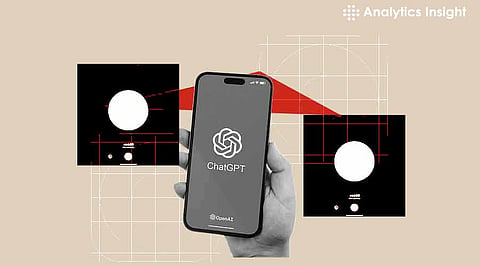

Artificial intelligence is one of those things that is continually gaining speed; exponentially rising. Here, the prime example is the chatbot ChatGPT. Recently, while using this, people have been taken back in surprise when the chatbot "seemed" to be starting up on its own, bringing about both curiosity and excitement. Incidentally, the incident was a glitch rather than a new feature, but it has brought some really interesting questions about how ChatGPT could "speak" and initiate future conversations. This article discusses how ChatGPT generates talking abilities, the technology involved in its model, and the scope of the future for AI in communication.
Even though ChatGPT can speak, this doesn't mean that it can speak like a human, but what it implies is that it has the text-to-speech option applied over the response. The TTS system converts written text into spoken words so that ChatGPT may mimic the act of speaking. These are facilitated by superior types of neural networks such as GPT-4, which have been trained from numerous amounts of data to type out coherent conversations similar to humans.
An array of complex technologies powers the flow from ChatGPT. One of the big innovations would be neural voice synthesis; specifically, patterns of realistic human speech by models like WaveNet. Such models capture subtle features in speech that might be reflected in a tone, pitch, or rhythm, making responses from ChatGPT more fluid and life-like.
Moreover, ChatGPT applies NLP to detect and reply to user inputs. NLP is what enables the chatbot to analyze text and generate meaningful responses. Coupled with TTS, this makes for an interaction experience where ChatGPT can engage in spoken dialogue. However, the recent incident by which ChatGPT began a conversation had proceeded from a technical issue according to OpenAI, and not necessarily a feature.
Talking with ChatGPT is quite a multi-layered process to get liveliness into it. There are so many steps involved:
Text-to-Speech Conversion: TTS technology is the backbone of the possibility of voice responses for ChatGPT in the mouth. It changes text into speech by relying on neural networks simulating human-like speech.
Natural Language Processing: Before it would respond, the chatbot had to understand what the user intended. NLP models enable the chatbot to understand text and provide corresponding responses.
Voice Synthesis: State-of-the-art WaveNet-based models allow for mimicking the rhythm, tone, and intonation of natural speech. The technology used enables more engaging and lifelike interactions.
NLP and TTS: The talk of ChatGPT has reached novel heights through this hybrid output of NLP and TTS. It gives real-time, instant voice responses to all the queries that come from the users.
This is where the gargantuan prospect for the further development of ChatGPT and other conversational AIs can be seen. Though it just glitched out on its users, the excitement is enormous for what is about to come in the future. Be it while implementing new versions, people almost believe that ChatGPT will not only speak but also engage in deeper and more meaningful dialogues, thereby finding further utility for both casual conversations and professional applications.
On the other hand, companies like Google are working to make voice AI more aggressive with their Gemini project, offering Android users real-time voice support. The trend of more interactive voice AI tools is on the upswing. A race has already been intensified on the path to developing smarter, more intuitive AI systems capable of speaking, listening, and understanding human language as natively as possible, and ChatGPT is already just a part of a much larger group.
The integration of text-to-speech (TTS) and natural language processing (NLP) technologies is revolutionizing how we interact with AI, allowing tools like ChatGPT to "speak" and engage users in new ways. As these technologies advance, we can anticipate even more sophisticated and lifelike conversations. The recent glitch that surprised users showcased the potential for ChatGPT to initiate spoken dialogue, sparking curiosity about its future capabilities. With ongoing innovations in voice synthesis and AI, the landscape of conversational AI is poised for transformation, promising richer, more meaningful exchanges that enhance both personal and professional communications. The future of ChatGPT speaking is just the beginning of a limitless journey in AI interactions.
